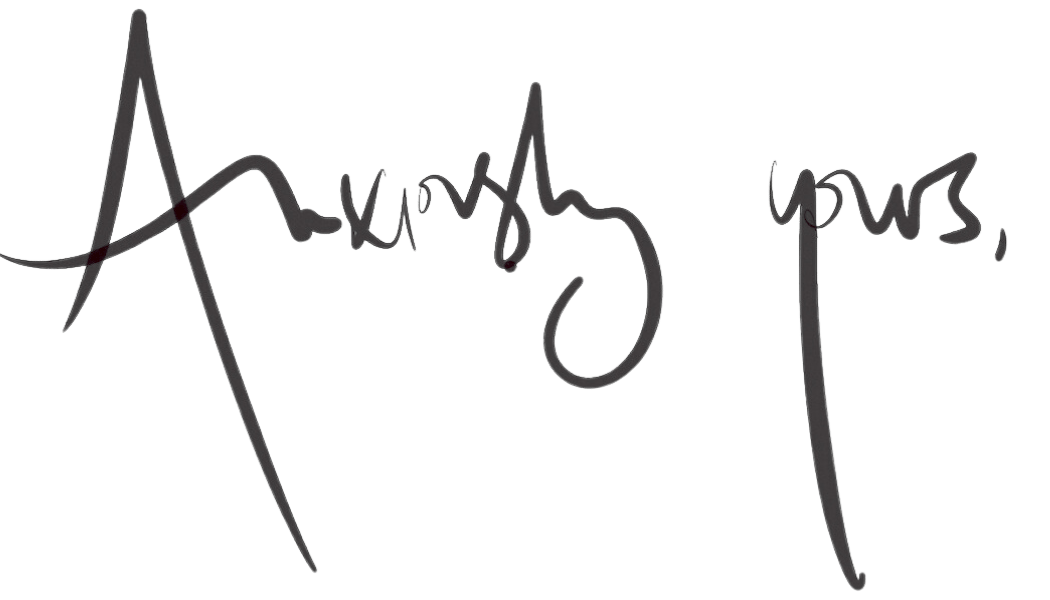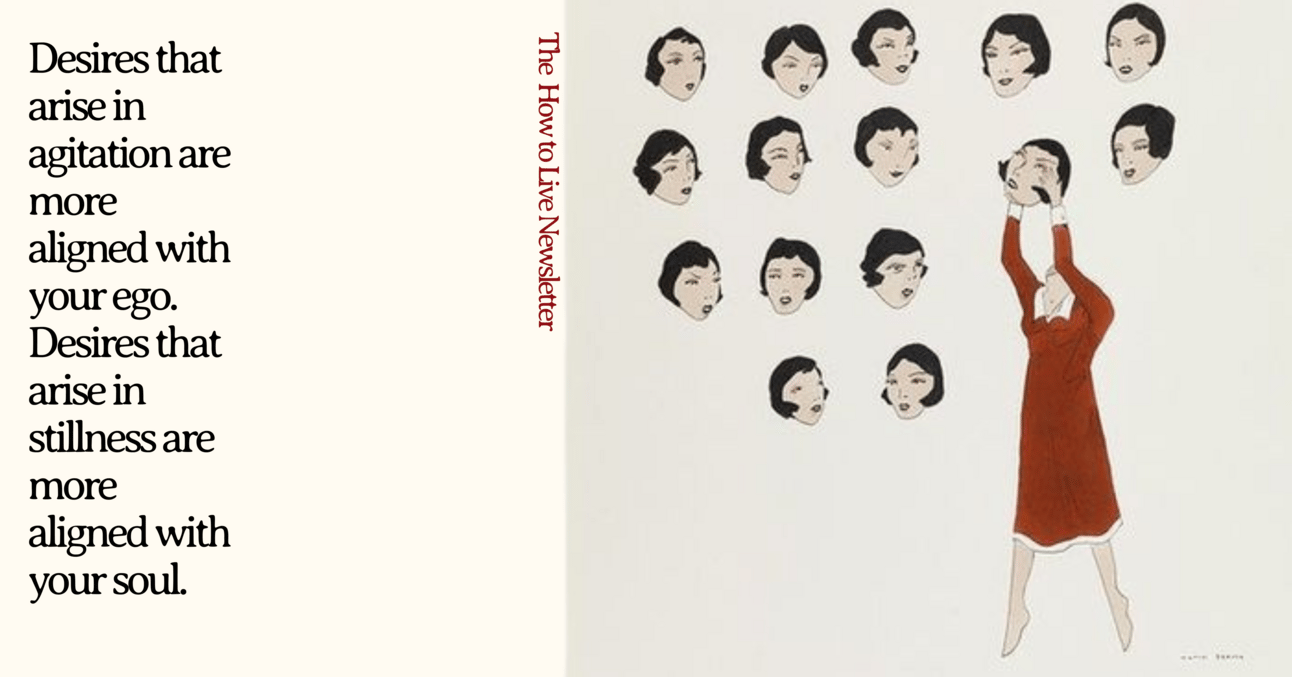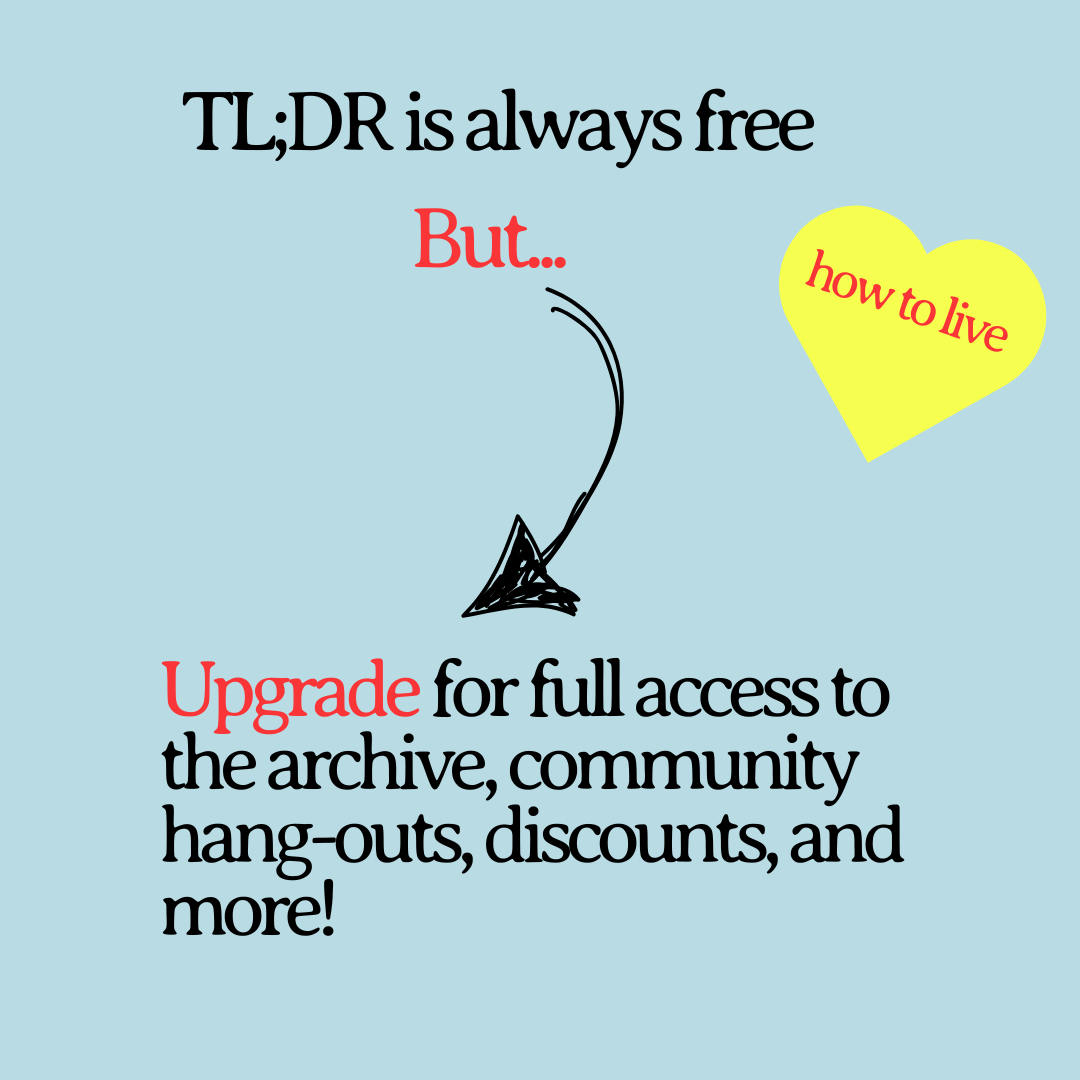TL;DR is a monthly digest summarizing the vital bits from the previous month's How to Live newsletter so you don't miss a thing.
Welcome to The How to Live Newsletter, where we uncover the hidden psychological forces shaping our lives—and holding us back.
Through deep research, personal storytelling, and hard-won insight, I challenge the myth of normalcy and offer new ways to face old struggles.
This newsletter is reader-supported—if it resonates, please consider a paid subscription for deeper insights, exclusive content, community, and an ad-free experience. ❤️
You can also donate any amount.
On April 9, 2025, I Revealed 10 Things Every Great Therapist Knows About Healing.
Between stimulus and response there is a space. In that space is our power to choose our response. In our response lies our growth and our freedom.
1. No one changes unless they want to.
You can drag someone to therapy. You can throw lifelines, write letters, and wait by the phone. But if they don't want to see it, feel it, do the terrifying work of changing—they won't. And it's not because they're evil or selfish. Change requires a kind of 'ego death,' a letting go of the old self to make way for the new. Most people would rather suffer than undergo this profound transformation.
Okay, so now what?
You must stop trying to rescue people from themselves. It will destroy you. Love people where they are, not where you wish they'd be. Let them choose. Save your energy for your healing. That's what changes the world.
Let go of the illusion that you can save anyone. You can offer support, not transformation. That part is up to them. And your job—your only job—is to protect your peace and live your truth, even if they never change.
Stay up-to-date with AI
The Rundown is the most trusted AI newsletter in the world, with 1,000,000+ readers and exclusive interviews with AI leaders like Mark Zuckerberg, Demis Hassibis, Mustafa Suleyman, and more.
Their expert research team spends all day learning what’s new in AI and talking with industry experts, then distills the most important developments into one free email every morning.
Plus, complete the quiz after signing up and they’ll recommend the best AI tools, guides, and courses – tailored to your needs.
I learned very early the difference between knowing the name of something and knowing something.
We absorb so much content during the day. We nod in recognition at the articles we read and the documentaries we watch; we underline passages and save quotes, Instagram stories, TikToks, and even memes that brilliantly break down race, patriarchy, and other concepts in ways that particularly resonate.
Then, over dinner with a friend, as we tell each other what we’re reading, watching, and thinking about, this inevitable question surfaces: “What does that mean?”
Suddenly, we’re struck dumb by our inability to articulate what we thought we’d fully absorbed and learned.
Waiter—the check!
That gap between input and understanding isn’t just frustrating; it's the difference between moving forward and remaining the same.
Richard Feynman (1918–1988) was a Nobel Prize-winning physicist renowned for his brilliance and uncanny ability to simplify complex ideas.
He wasn't just interested in knowledge for trivia's sake—he was fascinated by how people understand. Feynman believed that accurate understanding could only be measured by how well you could explain something to a beginner.
His philosophy rejected pretense, fancy jargon, and over-complicated explanations. He often said that if you couldn't explain something, you didn't understand it.
And when you don’t understand something you thought you did, you feel confused.
This core belief led him to develop a method that still transforms how people approach learning today: the Feynman Technique.
On April 23, I Wrote About The Politics of Being Alone.
In the first year of COVID-19, I was single—coincidentally, so was my dog—and we rode it out together in our small Brooklyn apartment.
While others found safety in numbers, I learned what true isolation meant.
Lockdown policies found families, couples, and single mothers (thank God) cocooned together, sharing space and company, essentially forgetting about the world outside, including their friends who were alone.
Every family I know disappeared to bunker up out of town with other families. They created pods, ran home schools, had big family-style dinners at long farm tables, and created micro-cultures in mini communes of their own making. I scrolled enviously through their posts on social media.
The silence of that first year was stark and telling. I have never felt so dead and invisible in my life. As it dragged on, my body responded to the lack of physical contact —no handshakes, hugs, or even a pat on my shoulder for nearly half a year. There were moments I questioned whether I was still alive.
I always imagined that in the event of an apocalypse, someone would make room for me in their bunker, but I was wrong.
We are shaped by our thoughts; we become what we think.
I've been thinking a lot about the meaning we assign to things—and how, if we strip away all the layers of interpretation, we'd see that all thoughts are, at their core, neutral. It's the meaning we attach to a thought that charges it, and it's that meaning, not the thought itself, that gives rise to our emotional reactions.
Since I can't yet write without a lot of pain (hand surgery), I've been "writing" by voice.
I want to share a lightly edited transcription of how I unpack the meanings I've given specific thoughts—and how, in doing so, my relationship to those thoughts begins to shift.
So, today’s piece is a portal into my thought process—the things I turn over again and again, and how I try to disentangle false beliefs from simple thoughts.
Voice Note: On Meaning and Reaction
I have a lot to do today, and I’m feeling stressed. But the stress isn’t coming from the tasks themselves—it’s coming from the meaning I’m assigning to them. That meaning creates pressure, and that pressure leads me to believe two things:
A) I won’t get it all done, and
B) I won’t understand how to do what needs doing.
So I’m not stressed because I have too much to do. I’m layering meaning on top of that fact—a meaning shaped by life experience, years of conditioning, and everything I’ve been taught to believe about myself as accurate (though that doesn’t mean it’s true).
To understand where this meaning comes from, I need to look back.
Until next week, I will remain…

Amanda
P.S. Thank you for reading! This newsletter is my passion and livelihood; it thrives because of readers like you. If you've found solace, wisdom or insight here, please consider upgrading, and if you think a friend or family member could benefit, please feel free to share. Every bit helps, and I’m deeply grateful for your support. 💙
Quick note: Nope, I’m not a therapist—just someone who spent 25 years with undiagnosed panic disorder and 23 years in therapy. How to Live distills what I’ve learned through lived experience, therapy, and obsessive research—so you can skip the unnecessary suffering and better understand yourself.
Some links are affiliate links, meaning I earn a small commission at no extra cost to you. Every bit goes straight back into supporting this newsletter. Thank you!












 Upgrade
Upgrade